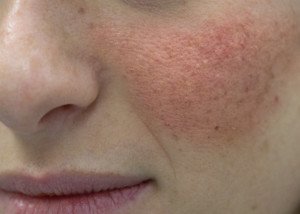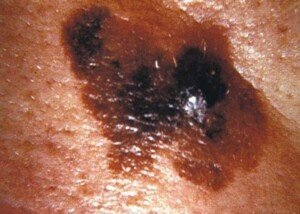Have a new “growth” on your face that doesn’t itch or flake and gets bigger every few days?
Is it seborrheic dermatitis or something else?
One day I became aware of a new patch on my forehead, and thought it might be a seborrheic keratosis, which is a harmless skin growth common in people over 40.
I have many, and have had several at some location on my forehead.
But I noticed that it seemed that every several days, this new patch was getting bigger.
I wouldn’t think that a seborrheic keratosis would grow this quickly.
The good news was that it was light in color, several shades darker than my skin tone.
However, a melanoma can be flesh colored.
On the other hand, melanomas don’t grow fast enough for someone to detect enlargement every two or three days.
The little patch on my forehead not only looked like it could be a seborrheic keratosis, but it also could easily pass as a patch of seborrheic dermatitis.
“Seborrheic dermatitis is a common skin condition that is characterized by red, itchy patches on the scalp, face and other areas of the body,” says Alpana Mohta, MD, DNB, a dual board certified dermatologist who specializes in clinical and aesthetic dermatology.

Seborrheic dermatitis
I’ve had seborrheic dermatitis flare-ups for years. The hallmark signs are not just their appearance, but the itching and mild stinging, along with flaking.
But the new patch on my forehead didn’t itch, sting or flake.
Then one day, when it was a little smaller than a dime, I thought I felt a slight itch where it was.
I decided to apply hydrocortisone cream every night before bed.
My dermatologist had recommended hydrocortisone after I told her that the prescription Nizoral was not working for the seborrheic dermatitis around my nose.
Within a few days, the patch was faded a little. And it continued fading as I applied the cream every night for about a week. After three weeks the patch was virtually gone.
Dr. Mohta says, “Some recent research [as of 2022] suggests that the condition may not always be accompanied by itching.
“One potential explanation for this is that the severity of the condition may vary from person to person, and in some cases, the symptoms may not be severe enough to cause significant discomfort.
“Additionally, certain treatments and medications may be effective at reducing or eliminating the itching associated with seborrheic dermatitis.
“As a result, it is possible for some individuals to experience the condition without significant itching.”
If you have a history of seborrheic dermatitis, you may want to try the hydrocortisone if you have a new, rapidly enlarging, but itchless and flakeless patch on your face or in an area where you already have seborrheic dermatitis.
And of course, the rule is always when in doubt, have a dermatologist check it out.
 Dr. Alpana Mohta is a dual board certified dermatologist and owner of dralpana.com. Her areas of interest include clinical dermatology, dermatopathology and dermatosurgery. She has over 85 research publications in numerous journals. Apart from her regular medical practice, she is also a medical writer, reviewer and advisor for many companies.
Dr. Alpana Mohta is a dual board certified dermatologist and owner of dralpana.com. Her areas of interest include clinical dermatology, dermatopathology and dermatosurgery. She has over 85 research publications in numerous journals. Apart from her regular medical practice, she is also a medical writer, reviewer and advisor for many companies.
 Lorra Garrick has been covering medical, fitness and cybersecurity topics for many years, having written thousands of articles for print magazines and websites, including as a ghostwriter. She’s also a former ACE-certified personal trainer.
Lorra Garrick has been covering medical, fitness and cybersecurity topics for many years, having written thousands of articles for print magazines and websites, including as a ghostwriter. She’s also a former ACE-certified personal trainer.
.










































